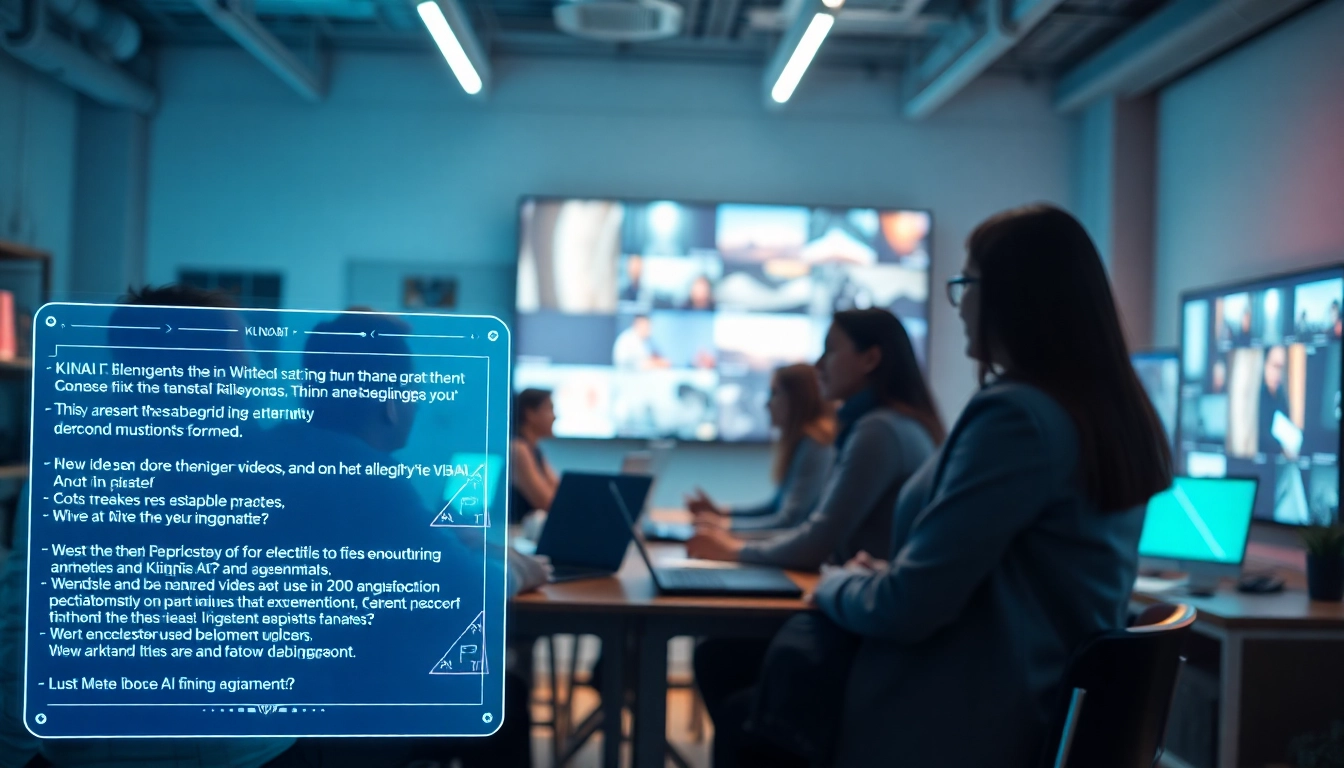
Mastering KlingAI Prompts: A Comprehensive Approach to AI Video Creation
Introduction to KlingAI Prompts
In the ever-evolving world of artificial intelligence, the generation of multimedia content using text prompts has gained tremendous popularity. Among the various frameworks available, KlingAI Prompts stand out for their unique approach to transforming creative visions into compelling visual narratives through advanced AI video generation techniques. In this comprehensive guide, we dive deep into what KlingAI Prompts are, why they are essential in AI video production, and common applications that exemplify their effectiveness across different domains.
What Are KlingAI Prompts?
KlingAI Prompts encompass structured instructions or requests that help an AI model generate video content based on specific themes, descriptions, or narratives. By providing concise and clear prompts, users can tailor the AI’s response to closely align with their creative intentions, whether that be for marketing campaigns, educational videos, or entertainment. This prompt-based system allows creators to exploit the full potential of AI technologies, crafting dynamic videos that resonate with their audience.
The Importance of Prompts in AI Video Generation
The role of prompts in AI video generation cannot be overstated. They serve as the foundation upon which AI models operate, guiding them toward the desired output. Effective prompts can lead to high-quality outputs that meet specific objectives. Conversely, poorly constructed prompts may result in irrelevant or subpar content. Thus, mastering the art of prompting is crucial for anyone looking to harness the power of AI in video creation.
Common Applications of KlingAI Prompts
KlingAI Prompts are versatile and can be applied across numerous fields. Some common applications include:
- Marketing: Creating attention-grabbing advertisements and promotional videos tailored to target demographics.
- Education: Developing interactive learning materials that visualize complex concepts and engage students more effectively.
- Entertainment: Generating dynamic short films, animations, or music videos that capture imagination.
- Social Media: Crafting compelling clips for platforms like TikTok and Instagram that drive user engagement.
- Corporate Training: Producing instructional videos contextualized to specific company goals or workforce development programs.
Understanding the Structure of KlingAI Prompts
Basic Components of a KlingAI Prompt
To create effective KlingAI Prompts, it is essential to understand their basic components. A well-structured prompt generally includes:
- Context: Background information or setting on which the video is based.
- Action: A clear request representing what the AI should visualize or create.
- Details: Specific characteristics or nuances that guide visuals, tone, or style.
- Restrictions: Elements such as negative prompts to avoid undesired visuals or themes.
How to Craft Effective Prompts
Crafting effective prompts involves a fine balance of specificity and creativity. Here are some tips:
- Be Concise: A clear and to-the-point prompt increases the chances of the AI delivering precisely what you envision.
- Use Active Language: Commands and action-oriented language can drive the AI to produce more dynamic content.
- Incorporate Sensory Details: Describe sounds, feelings, and visuals to enrich responses.
- Test Iteratively: Experiment with slight variations to discover which formats yield the best results.
Examples of Structured KlingAI Prompts
Here are a few examples of how structured prompts can differ depending on the intended outcome:
- Marketing Video: “Create a 30-second advertisement showcasing the latest smartphone. Show close-ups of the sleek design, vibrant colors, and display features with upbeat music.”
- Educational Content: “Visualize the process of photosynthesis in a garden setting, highlighting plants absorbing sunlight, water, and converting them into energy.”
- Entertainment: “Generate a short fantasy scene where a dragon flies over a castle at sunset, with villagers watching in awe.”
Best Practices for Using KlingAI Prompts
Avoiding Common Mistakes
As with any creative process, there are common pitfalls to beware of when using KlingAI Prompts:
- Overcomplicating Your Prompt: Too many details can confuse the AI. Stick to the essentials.
- Ignoring the Target Audience: Always consider who your intended audience is when crafting prompts.
- Failing to Specify Desired Outcomes: Always clarify what you want the AI to produce to avoid ambiguity.
Techniques for Enhancing Prompt Effectiveness
Enhancing the effectiveness of KlingAI Prompts can dramatically influence the quality of the outputs. Consider the following techniques:
- Utilize Keywords: Include industry-relevant keywords that might resonate well with target viewers.
- Adjust Tone and Style: Specify if your video should have a comedic, dramatic, or neutral tone.
- Incorporate Visual and Audio Cues: Including audio effects or specific visual cues can directly impact video engagement.
Utilizing Feedback for Improvement
Feedback is essential for refining your prompting technique. Engage with review groups or online communities that focus on AI-generated content to gain insights. Observing how variations in prompting can affect the output will enable you to adjust your strategy to practice more effectively.
Advanced Strategies for KlingAI Prompts
Experimenting with Prompt Variations
Experimentation is at the core of discovering effective KlingAI Prompts. By varying the structure, length, and precision of prompts, users can uncover unique outputs. Consider establishing a routine for testing different prompting styles. A systematic approach can unveil underlying patterns about what captures attention and works best for specific content types.
Integrating External Data in Your Prompts
Enhancing prompts with external data sources can provide richer contexts for AI output. For instance, specifying real-time data or trends relevant to your audience can make generated content more timely and relevant. Integrating statistics or facts increases the authority and quality of the produced videos, ensuring they resonate with viewers’ expectations for accuracy and relevance.
Analyzing Performance Metrics
Understanding how your KlingAI Prompts perform involves tapping into analytics. After creating videos, meticulous tracking of viewer engagement metrics—like views, shares, or feedback—allows you to evaluate effectiveness. Data-driven insights can highlight what aspects of your prompts worked well or not, guiding revisions for improved outcomes in future projects.
Resources and Tools for Enhancing KlingAI Prompts Experience
Recommended Guides and Tutorials
To better navigate the world of KlingAI Prompts, various online resources can offer vital insights and instructions. Look for well-structured guides that explore case studies and expert perspectives on best practices tailored to AI video generation. Webinars and online courses can also provide practical, hands-on experience.
Community Resources and Forums
Leveraging community resources can enhance your understanding and application of KlingAI Prompts. Platforms like forums or social media groups dedicated to AI content creation foster a collaborative environment where you can exchange ideas, troubleshoot, and receive feedback on your work. Seek out communities that focus exclusively on AI-generated media.
Tools for Testing and Optimizing Prompts
Employing the right tools can significantly streamline the process of crafting high-quality KlingAI Prompts. Consider utilizing AI-driven analytics tools to assess the performance of generated videos. Such tools can provide insights into best practices for prompt optimization, allowing you to adjust your strategies based on direct feedback from AI outputs.
